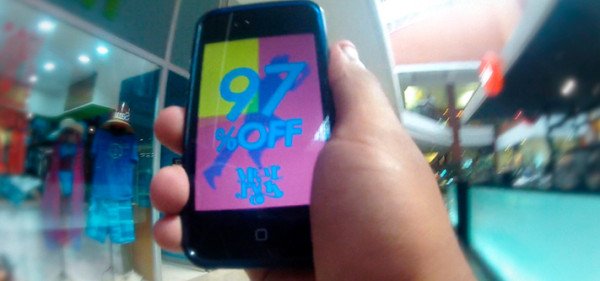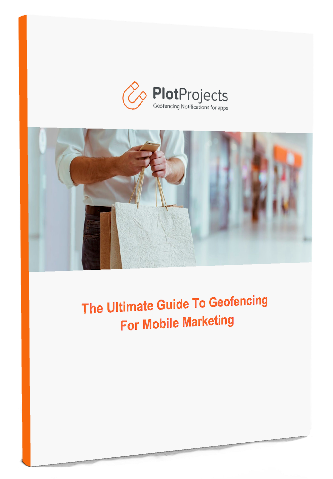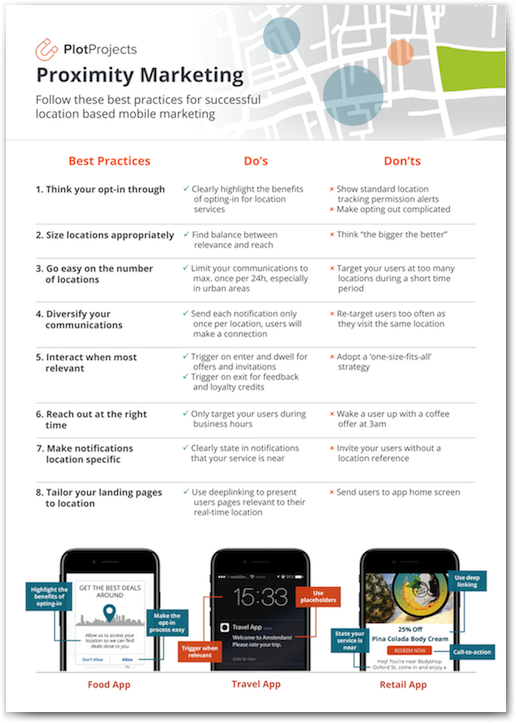So you want to create a geofencing campaign, but you’re not sure where to start. Here are some tips on where to put your geofence and why…
1. Around your own businesses location – to attract customers nearby
The most straightforward and logical place to start with, when choosing locations for your first geofencing campaign, is of course around your business locations. This way geofencing can help you attract customers nearby and as a result increase foot traffic to your business locations.
Once the location is set, you can define the area of your geofence. With Plot Projects this is as simple as setting radius around the location. The radius can be as small as 50 meters.
Make sure to choose an optimal radius for your geofences – you will need to find a balance between relevance and reach. Generally we see that smaller geofences are more relevant to users and lead to higher click through rates.
2. Around your competitors locations – lure customers away!
A clever and definitely engaging way to reach out to your customers would be to target them at your competitors’ locations. You can let them know that you have a better deal and lure them away.
One of the most famous and our personal favourite examples of successfully “hijacking” customers from competitors with help of geofencing was carried out by Meat Pack, a sneaker retailer. Their campaign lured away over 600 people from rival stores.
Meat Pack set up geofences around their competitors’ stores and used its official app to discover when a former customer visited a competitor’s store. When the customer entered a rival’s store, a fun promo video, offering the customer a 99% discount, would appear and decrease by one percent with each second that went by until the user entered a nearest Meat Pack store. This sent people hurrying towards Meat Pack’s store to make the countdown stop. The faster they reached the store, the better the deal they got. That discount could then be used in-store. For more creative geofencing use cases, check this post.

Meat Pack hijacking customers from competitors with geofencing
This goes a long way to show how effective this technique can be, especially if you add a compelling offer to it; and it doesn’t have to be part of a campaign – it can work just as well as a stand-alone offer.
3. Inside your buildings – to interact with customers
“And what if I want to reach out to my customers inside my business location?”, – you might ask. There is a way to do that as well and it involves beacons. Beacons are normally placed indoors and with them you are able to engage with customers on much smaller ranges (1-30 meters). Using beacons, you are can greet customers at entrance or provide them with more relevant information at specific parts of your business location.
If you want to take it a step further and make your mobile campaign more relevant and thus effective, you can use beacons in conjunction with geofences. Set up geofences around your business locations to invite customers in and place beacons inside to interact with them indoors, for example thank people for visiting and perhaps rewarding with an offer.
 |
Want to know more about geofencing?Download the Ultimate Guide to Geofencing for Mobile Marketing to find out more about geofencing and beacons and why to use them in your app. |



